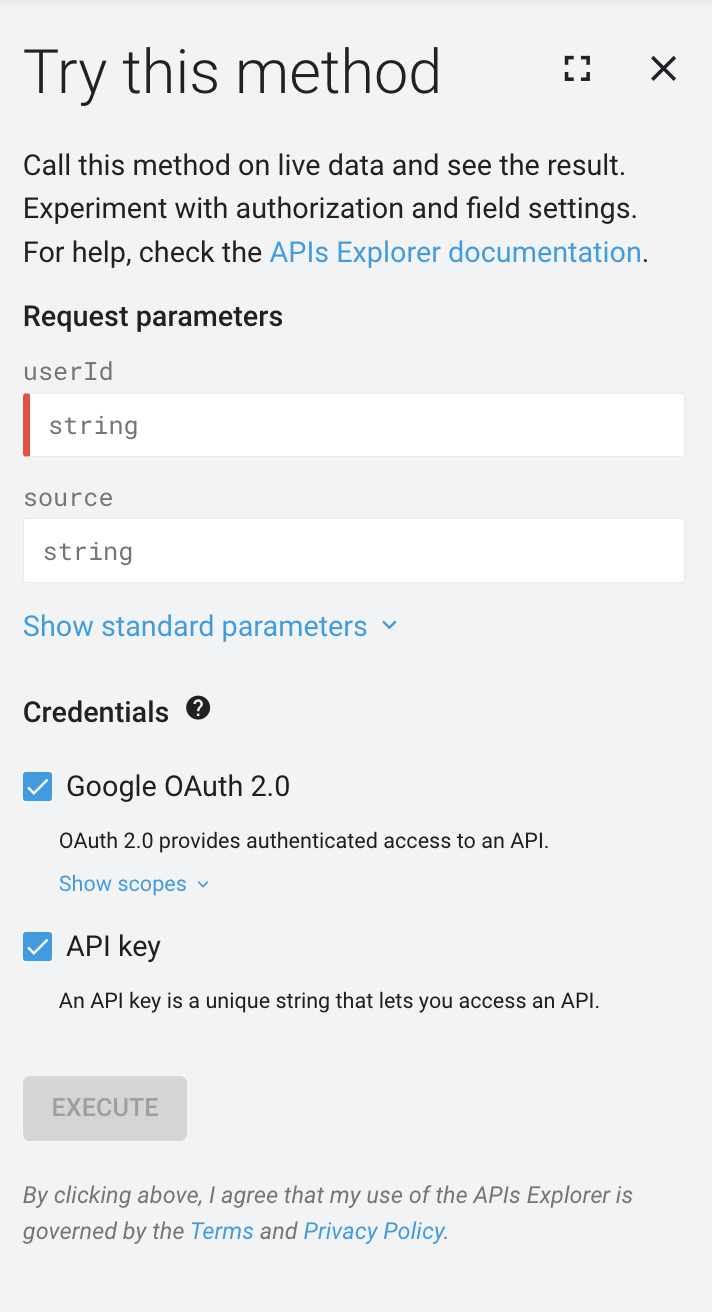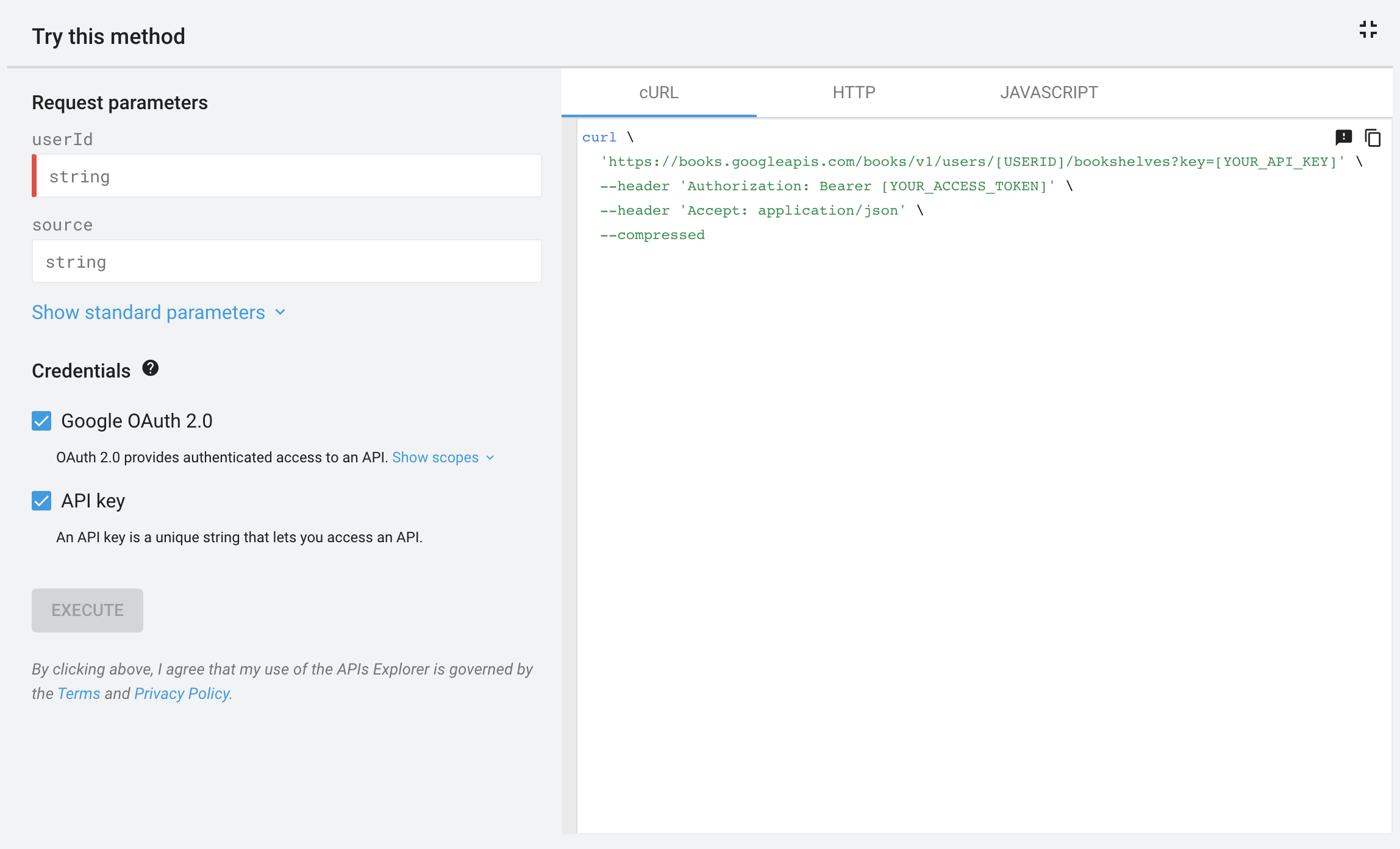O APIs Explorer do Google é uma ferramenta disponível na maioria das páginas de documentação de métodos da API REST que permite testar os métodos da API do Google sem escrever código. O APIs Explorer funciona com dados reais. Por isso, tenha cuidado ao testar métodos que criam, modificam ou excluem dados.
Usar o diretório
Para ver uma lista das APIs do Google que você pode explorar, procure no Diretório de APIs Explorer do Google. Essa lista contém links para a documentação de referência da API das APIs compatíveis. Siga as etapas abaixo para explorar a API:
- Abra o Diretório de APIs Explorer do Google.
- Na caixa de pesquisa na parte superior, digite o nome da API que você quer explorar.
- Clique no nome da API. A documentação de referência da API será aberta.
- À esquerda, clique no método que você quer usar na navegação.
À direita, localize o painel chamado "quot;Teste este método"." Veja abaixo detalhes sobre como usar o painel lateral do APIs Explorer e como expandi-lo para o painel do APIs Explorer em tela cheia.
Usar o painel lateral


Por padrão, o APIs Explorer aparece no lado direito da tela na documentação de referência da API para métodos compatíveis.
É possível personalizar e interagir com as seguintes seções no painel lateral do APIs Explorer:
- Parâmetros de solicitação, se exigidos pelo método.
- Corpo da solicitação, se exigido pelo método.
- Credenciais, para testar o método com vários tipos de escopos e tipos de credenciais.
- Execute para executar o método usando os parâmetros e as configurações que você especificou.
- Resultado, exibido somente após a execução do método.
Usar o painel em tela cheia


No painel lateral recolhido do APIs Explorer, clique em Tela cheia para expandir o APIs Explorer. O
painel em tela cheia exibe um painel extra que contém amostras de código,
respostas application/json e respostas HTTP brutas.
Autenticação
O APIs Explorer usa as próprias credenciais para fazer uma solicitação. Não é possível usar credenciais personalizadas com o APIs Explorer.
Formatos de dados
O APIs Explorer é compatível apenas com JSON de respostas e payloads de solicitações. Mesmo que sua API seja compatível com outros formatos de dados, esses formatos não funcionam no APIs Explorer.
